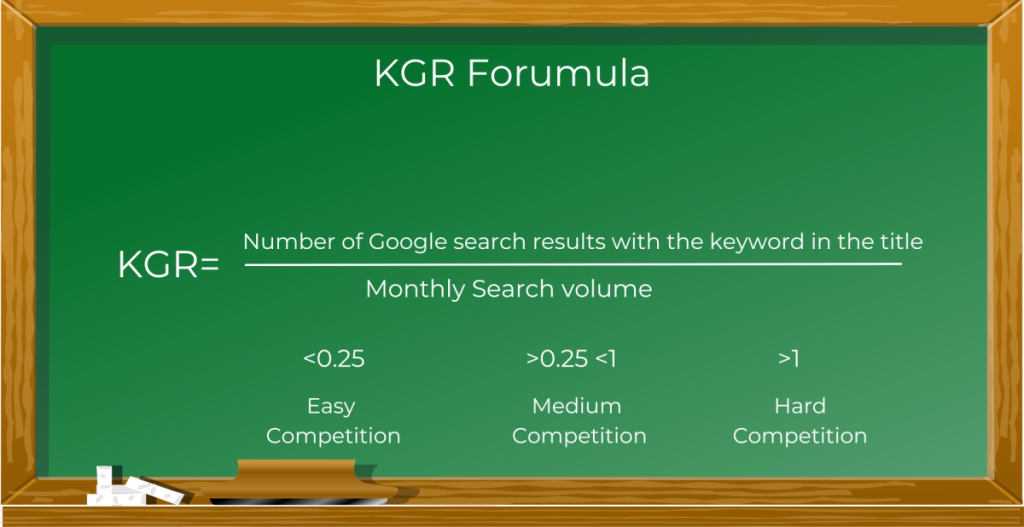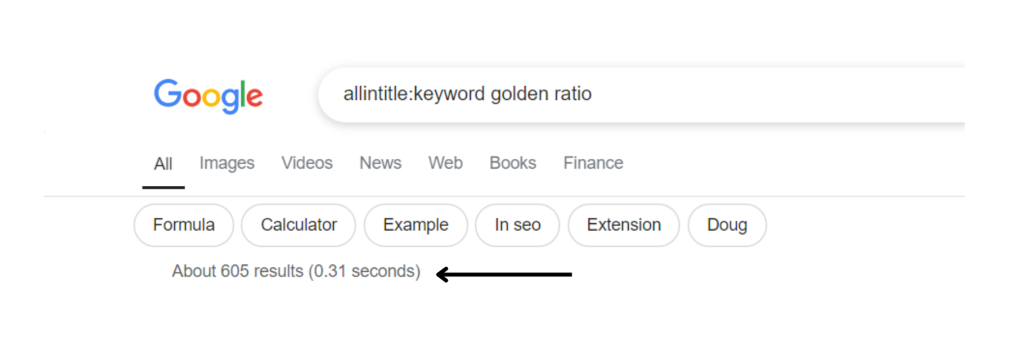What Is Keyword Golden Ratio (KGR)?

Keyword Golden Ratio (KGR) is an SEO technique that helps identify low-competition keywords, enabling websites to rank quickly on search engines. It’s particularly useful for new websites or blogs that lack the authority to compete for high-competition keywords. By strategically targeting keywords with specific parameters, KGR allows you to get ahead in the search rankings without waiting months or years. At Rank n Thrive, we still use this strategies to rank certain niche to get results faster.
KGR Formula:
KGR focuses on two parameters:
- Allintitle results: The number of pages with the keyword in their title (measured using Google’s “allintitle” search operator).
- Monthly search volume: The number of monthly searches for the keyword (preferably under 250).
If the KGR value is less than 0.25, the keyword is considered easy to rank for within days or weeks.
How To Find KGR Keywords:
1. Make a List of Keywords: Think of words people might search for in your niche. Use tools like Google Keyword Planner, Ahrefs, SEMrush, or Ubersuggest to help. Pick long-tail keywords (3-5 words) for better results.
2. Check Search Volume: After making your list, see how many people search for each keyword. For KGR, choose keywords with less than 250 searches per month. Use keyword research tool to find search volume.
Below screenshot is from Ubersuggest

3. Find Allintitle Results: Use Google search with the operator “allintitle:keyword” to determine how many pages have the exact keyword in their title.

4. Apply the Formula: Divide the number of “allintitle” results by the “monthly search volume“.
Calculation
- Keyword: “keyword golden ratio”
- Allintitle results: 605.
- Monthly search volume: 110.
- KGR: 605 ÷ 110 = 5.5.
This keyword is is too hard to rank because a KGR value is much higher than 1.
Why is KGR Important for SEO?
KGR simplifies the keyword research process and ensures faster results. Unlike traditional keyword strategies, which focus solely on high-volume keywords, KGR focuses on opportunity of finding keywords that are untapped but relevant. Ever though how some blogs rank for niche queries almost in no time? KGR might just be their hidden trick.
Benefits of Using KGR
1. Quick Ranking on Google
Unlike competitive keywords that take months to rank, KGR keywords often rank in days. This is especially beneficial for new websites with little domain authority.
2. Targeted Traffic
KGR helps you attract visitors searching for highly specific terms, ensuring better engagement, more traffic and conversion rates.
3. Scalable Strategy
By targeting multiple KGR keywords, you can build a strong foundation of traffic-driving pages without excessive competition.
When to Use KGR
1. For New Websites
KGR helps new websites bypass the need for high domain authority by targeting low-competition keywords.
2. For Low-Competition Niches
It’s perfect for uncovering untapped opportunities in specific niches.
3. For Content Hubs
It is an excellent strategy for creating supporting content that links to your pillar pages, improving their authority and relevance.
Tools to Help You Find KGR Keywords
- Ahrefs: Comprehensive keyword data and competition analysis.
- SEMrush: Great for discovering related keywords and tracking rankings.
- Ubersuggest: Budget-friendly option for keyword research.
- Keywords Everywhere: Provides search volume data directly in your browser.
Frequently Asked Questions:
1. What is the ideal KGR value for quick ranking?
The ideal KGR value is less than 0.25, which indicates low competition and high ranking potential.
2. Can KGR work for high-volume keywords?
No, KGR is most effective for keywords with a monthly search volume under 250.
3. Do allintitle results affect rankings directly?
Not directly, but fewer allintitle results indicate lower competition for that keyword.
4. How often should I update my KGR calculations?
Recalculate periodically, especially if search volumes or competition levels change.
